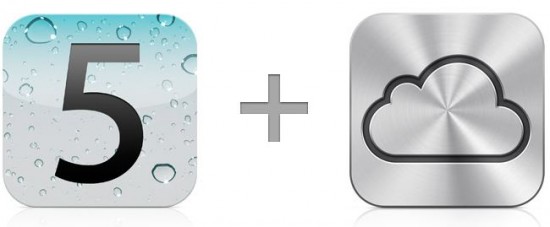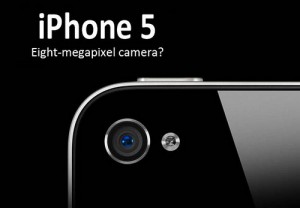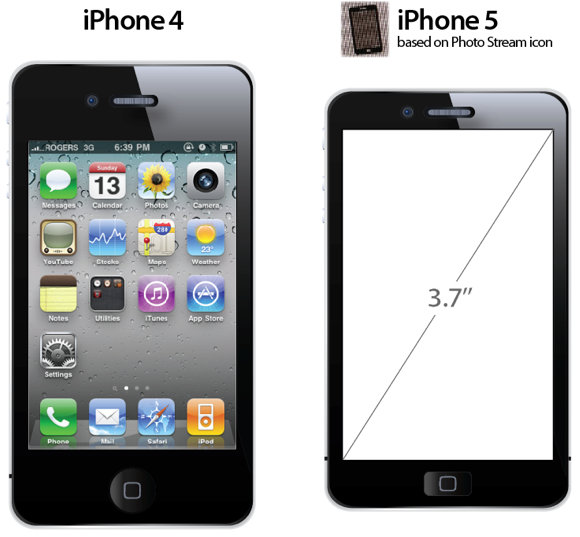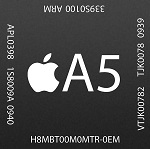Although Apple does not reveal the exact specifications and features until the device is officially unveiled, we could dictate some of the main features that are expected. However, rumor of the new iPhone 5 features, in terms of both hardware and software upgrades, will definitely entice any smartphone buyer.
The upcoming phone is expected to sport the Apple’s latest and greatest A5 processor chip, iCloud service, higher-resolution camera, and a 4-inch screen size. Here are some of the most anticipated iPhone 5 features:
iMessage is an application that is developed to compete with Blackberry Messenger. The app will allow iPod Touch, iPhone, and iPad users to communicate (much like a chat service) with each other. The iMessage feature has been integrated into the SMS/MMS application used originally on the iPhone models.

Apple’s iPhone 5 is expected to feature the new iCloud service for wireless remote access of music from all computers and mobile devices.
The iPhone5 will automatically sync with the iCloud which will allow users to store photos, apps, calendars and documents without having them to store in the phone’s memory. Apple is also looking to tie up with top music label companies to license songs for the iCloud service.
However, rumours state that Apple might release a low-cost “iCloud iPhone” alongside the iPhone 5. It could be named the “iPhone Mini”
A5 Processor to power the iPhone5
iPhone 5 will house the A5 as the main processor, which technically is the same chip that currently powers the iPad 2. The A5 contains a dual-core ARM Cortex-A9 CPU with NEON SIMD accelerator and a dual core PowerVR SGX543MP2 GPU, which means that the iPhone5 can do twice the work at once. The processor speed will be somewhere between 1.2 to 1.5 GHz, with probably a 1GB RAM.
The processor upgrade is done not just to increase the processing speed of the phone, but also to compete with the newly launched Samsung Galaxy S II.
The A5 chip might effectively increase the power use, however, it is said that the chip has “got a dynamic power management”, which can lower the [speed] depending on the workload, and thus efficiently make use of the power.
 According to sources, Apple has filed several patent applications relating to 3D picture capturing to the US Patent and Trademark Office later in March. This indicates that the iPhone 5 might feature a 3D camera. The filing indicates that the device will be capable of capturing, processing and rendering 3D images with dual-camera hardware.
According to sources, Apple has filed several patent applications relating to 3D picture capturing to the US Patent and Trademark Office later in March. This indicates that the iPhone 5 might feature a 3D camera. The filing indicates that the device will be capable of capturing, processing and rendering 3D images with dual-camera hardware.
Another interesting feature is that the iPhone 5 will be capable of taking pictures in Panorama. It will work similarly to the ’360 Panorama’ application in the App Store. It will let you take pictures in a sequence as you move the camera from one side to another, which in the end will effortlessly stitch the images together to create a panorama.
Additionally, if Apple really wants to keep up with the competition to Android, then it might consider improving upon the video resolution to a full 1080p HD recording. Currently iPhone 4 has a 720p video capture at 30 frames per second.

Image credits: PhoneArena.com
The upcoming phone is expected to sport the Apple’s latest and greatest A5 processor chip, iCloud service, higher-resolution camera, and a 4-inch screen size. Here are some of the most anticipated iPhone 5 features:
iOS 5
Apple announced iOS 5.0 and its features during the WWDC 2011 keynote address on June 6, 2011. The user interface is based on the concept of direct manipulation, using multi-touch gestures. It is expected to come with more than 200 new features that will include improved Notification System, News Stand and iMessage.iMessage is an application that is developed to compete with Blackberry Messenger. The app will allow iPod Touch, iPhone, and iPad users to communicate (much like a chat service) with each other. The iMessage feature has been integrated into the SMS/MMS application used originally on the iPhone models.

iCloud
The iPhone5 is expected to have the iCloud service.Apple’s iPhone 5 is expected to feature the new iCloud service for wireless remote access of music from all computers and mobile devices.
The iPhone5 will automatically sync with the iCloud which will allow users to store photos, apps, calendars and documents without having them to store in the phone’s memory. Apple is also looking to tie up with top music label companies to license songs for the iCloud service.
However, rumours state that Apple might release a low-cost “iCloud iPhone” alongside the iPhone 5. It could be named the “iPhone Mini”
“The iPhone Mini (or iPhone Nano, or whatever) could have significantly less storage than a typical iPhone. Most likely 8 gigabytes of storage – the same as the lowest end iPhones right now. Apple won’t prevent users from storing their own content, because that would be crazy. But since it has a small amount of memory, Apple will likely push the ability to stream media via MobileMe as well.”
A5 Processor to power the iPhone5
iPhone 5 will house the A5 as the main processor, which technically is the same chip that currently powers the iPad 2. The A5 contains a dual-core ARM Cortex-A9 CPU with NEON SIMD accelerator and a dual core PowerVR SGX543MP2 GPU, which means that the iPhone5 can do twice the work at once. The processor speed will be somewhere between 1.2 to 1.5 GHz, with probably a 1GB RAM.The processor upgrade is done not just to increase the processing speed of the phone, but also to compete with the newly launched Samsung Galaxy S II.
The A5 chip might effectively increase the power use, however, it is said that the chip has “got a dynamic power management”, which can lower the [speed] depending on the workload, and thus efficiently make use of the power.
iPhone 5 to Sport a Better Camera
The iPhone 4 sports a 5 megapixel camera, so I’m expecting that the iPhone 5 will have a rear-facing 8MP dual-LED flash camera. However, this isn’t really “awesome”, since most of the high-end Android smartphones come with an 8MP camera. Along with that, the iPhone 5 is expected to have a front-facing camera for video chatting. According to sources, Apple has filed several patent applications relating to 3D picture capturing to the US Patent and Trademark Office later in March. This indicates that the iPhone 5 might feature a 3D camera. The filing indicates that the device will be capable of capturing, processing and rendering 3D images with dual-camera hardware.
According to sources, Apple has filed several patent applications relating to 3D picture capturing to the US Patent and Trademark Office later in March. This indicates that the iPhone 5 might feature a 3D camera. The filing indicates that the device will be capable of capturing, processing and rendering 3D images with dual-camera hardware.Another interesting feature is that the iPhone 5 will be capable of taking pictures in Panorama. It will work similarly to the ’360 Panorama’ application in the App Store. It will let you take pictures in a sequence as you move the camera from one side to another, which in the end will effortlessly stitch the images together to create a panorama.
Additionally, if Apple really wants to keep up with the competition to Android, then it might consider improving upon the video resolution to a full 1080p HD recording. Currently iPhone 4 has a 720p video capture at 30 frames per second.
Display and Resolution
There hasn’t been a better screen resolution since the release of the iPhone 4. Currently the iPhone 4 has a 3.5 inches screen size, and sources indicate that Apple might stay locked with the current size. But a few other sources say that Apple is planning to increase the screen size to 4-inch with higher screen resolution. I feel that Apple could compromise at 3.7-inch or 3.75-inch.
Image credits: PhoneArena.com
Other iPhone5 Features

With 8 megapixels and all-new optics, this just might be the best camera ever on a mobile phone. It just might be the only camera you’ll ever need. And if you think that’s amazing, wait until you see your photos.
Mega megapixels.
The iPhone 4S camera gives you 8 megapixels — that’s 60 percent more pixels than the camera on iPhone 4. They’re engineered with a higher, full-well capacity to collect even more light. With more megapixels and more light, you’ll see a dramatic difference in the resolution and details of your images. So your photos look stunning everywhere you show them off — on your iPhone, your computer, or your HDTV. And they’re rendered pixel for pixel in prints as large as 8x10.
All-new optics make all
the difference.
Great photography isn’t just about megapixels — it’s about light, too. The all-new, advanced optics in this camera work together to make sure whatever light you have gives you the best image possible. The custom lens uses five precision elements to shape incoming light, which makes the entire image sharper. The larger f/2.4 aperture lets in more light, so photos look brighter and better. And the advanced hybrid infrared filter keeps out harmful IR light, so you’ll see more accurate and uniform colors.Turn down the lights.
Or turn them way up.
Pull out your iPhone in moonlight, candlelight, or under little white lights. Or shoot in bright light. Like at the beach. iPhone captures low-light and lots-of-light moods beautifully. So darks aren’t too dark and lights aren’t too light. Even action shots are less blurry. The next-generation backside illumination sensor is engineered with increased sensitivity and a shorter exposure time to achieve the same scene brightness — colors are less saturated and you’ll see more details. And the LED flash automatically kicks in when it’s needed (but you can always turn it off).

A5 chip and iOS 5.
The power behind your photos.
The A5 chip is designed with an image signal processor that’s just as good as the ones found in DSLR cameras. It’s how you can tap to focus and control exposure. And it’s the power behind zero shutter lag. The image signal processor makes the iPhone 4S camera faster, so you’ll catch all the action as it happens. The camera also uses advanced algorithms in iOS 5 for even more color accuracy, better white balance, and greater dynamic range. When you see your photos, you’ll see exactly what that means.This camera loves a face.
With new face detection, this camera is smart enough to know whether you’re taking a portrait or a group shot. It focuses on the most prominent face in the frame and balances exposure across up to 10 faces. So you’ll definitely catch smiles. And maybe even a smirk or two.

Capture the moment in
a split second.
Think about all those fun, fleeting moments you wish you’d caught on film. Now you can open the Camera app right from the Lock screen. So when things happen fast, you’ll capture them fast. Compose a quick shot with grid lines and pinch-to-zoom gestures. Focus with a tap. Then press the volume-up button to take a photo. And suddenly, everything is a photo op.Edit photos right on iPhone.
It’s not just an amazing camera. It’s an on-the-fly editing studio. Crop, rotate, enhance, and remove red-eye right on iPhone — without the help of photo editing software on a computer. Then organize your shots into albums, so you know where your favorites are when you want to show them off.

HDR. The best everything.
All in one shot.
Tap HDR and take a photo. iPhone 4S captures three photos from that one shot, each with a different exposure level. Then it layers the shots together to create a single photo that combines the best parts of each shot. The wide range of light is more accurate in an HDR photo. And iPhone saves both the original and the HDR photo in your Camera Roll. You can clearly see the difference.Photo Stream.
And other ways to share.
With Photo Stream in iCloud, new photos you take are automatically sent to all your devices, so you can show them off on your iPhone, iPad, iPod touch, Mac, or PC.1 Post them to the web the second you take them, and they’ll be the envy of your Flickr, Facebook, and Twitter world. Share them on your HDTV with AirPlay.2 Or send your photos through iMessage or MMS. Or go old-school and send them in an email.

With 8 megapixels and all-new optics, this just might be the best camera ever on a mobile phone. It just might be the only camera you’ll ever need. And if you think that’s amazing, wait until you see your photos.
Mega megapixels.
The iPhone 4S camera gives you 8 megapixels — that’s 60 percent more pixels than the camera on iPhone 4. They’re engineered with a higher, full-well capacity to collect even more light. With more megapixels and more light, you’ll see a dramatic difference in the resolution and details of your images. So your photos look stunning everywhere you show them off — on your iPhone, your computer, or your HDTV. And they’re rendered pixel for pixel in prints as large as 8x10.
All-new optics make all
the difference.
Great photography isn’t just about megapixels — it’s about light, too. The all-new, advanced optics in this camera work together to make sure whatever light you have gives you the best image possible. The custom lens uses five precision elements to shape incoming light, which makes the entire image sharper. The larger f/2.4 aperture lets in more light, so photos look brighter and better. And the advanced hybrid infrared filter keeps out harmful IR light, so you’ll see more accurate and uniform colors.Turn down the lights.
Or turn them way up.
Pull out your iPhone in moonlight, candlelight, or under little white lights. Or shoot in bright light. Like at the beach. iPhone captures low-light and lots-of-light moods beautifully. So darks aren’t too dark and lights aren’t too light. Even action shots are less blurry. The next-generation backside illumination sensor is engineered with increased sensitivity and a shorter exposure time to achieve the same scene brightness — colors are less saturated and you’ll see more details. And the LED flash automatically kicks in when it’s needed (but you can always turn it off).

A5 chip and iOS 5.
The power behind your photos.
The A5 chip is designed with an image signal processor that’s just as good as the ones found in DSLR cameras. It’s how you can tap to focus and control exposure. And it’s the power behind zero shutter lag. The image signal processor makes the iPhone 4S camera faster, so you’ll catch all the action as it happens. The camera also uses advanced algorithms in iOS 5 for even more color accuracy, better white balance, and greater dynamic range. When you see your photos, you’ll see exactly what that means.This camera loves a face.
With new face detection, this camera is smart enough to know whether you’re taking a portrait or a group shot. It focuses on the most prominent face in the frame and balances exposure across up to 10 faces. So you’ll definitely catch smiles. And maybe even a smirk or two.

Capture the moment in
a split second.
Think about all those fun, fleeting moments you wish you’d caught on film. Now you can open the Camera app right from the Lock screen. So when things happen fast, you’ll capture them fast. Compose a quick shot with grid lines and pinch-to-zoom gestures. Focus with a tap. Then press the volume-up button to take a photo. And suddenly, everything is a photo op.Edit photos right on iPhone.
It’s not just an amazing camera. It’s an on-the-fly editing studio. Crop, rotate, enhance, and remove red-eye right on iPhone — without the help of photo editing software on a computer. Then organize your shots into albums, so you know where your favorites are when you want to show them off.

HDR. The best everything.
All in one shot.
Tap HDR and take a photo. iPhone 4S captures three photos from that one shot, each with a different exposure level. Then it layers the shots together to create a single photo that combines the best parts of each shot. The wide range of light is more accurate in an HDR photo. And iPhone saves both the original and the HDR photo in your Camera Roll. You can clearly see the difference.Photo Stream.
And other ways to share.
With Photo Stream in iCloud, new photos you take are automatically sent to all your devices, so you can show them off on your iPhone, iPad, iPod touch, Mac, or PC.1 Post them to the web the second you take them, and they’ll be the envy of your Flickr, Facebook, and Twitter world. Share them on your HDTV with AirPlay.2 Or send your photos through iMessage or MMS. Or go old-school and send them in an email.


 Diposting oleh
Diposting oleh















0 komentar:
Posting Komentar